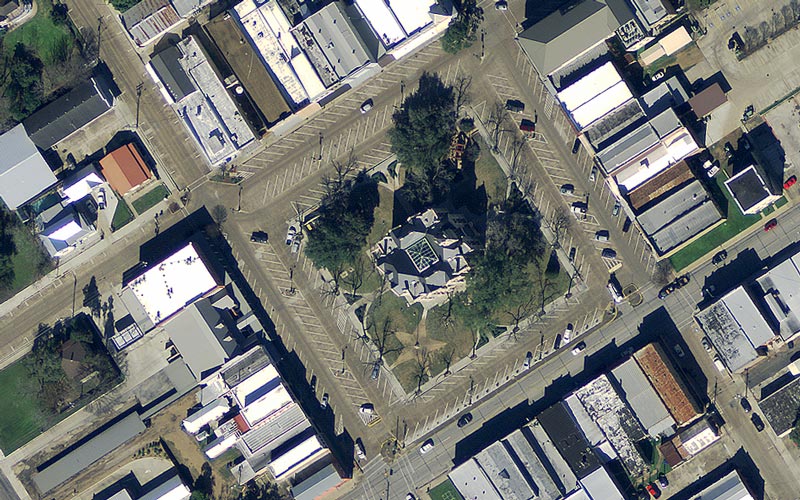- Who We Are
- What We Do
- Divisions
- Transparency
- News
- Events
- Regional Directory
- Careers

Demographic Data
what we do
CAPCOG is a designated census information center through an agreement with the U.S. Census Bureau. It provides data and analysis for a local and regional audiences attempting to make Census and Texas demographic information more accessible.
Census Bureau Data
The Census Bureau is the federal government’s largest statistical agency. It is dedicated to providing facts and figures about America’s people, places, and economy. It operates data.census.gov a platform to access data and digital content from the bureau with an emphasis on customer experience by making data available from one centralized place so data users spend less time searching for data and more time using it.
Go to the Census website to get the most recent census data.
July 2023 Estimates
The U.S. Census Bureau releases populations estimates, components of population change, and housing unit counts for each county every year for the previous year. The county data is generally released in March. CAPCOG aggregates the data for the 10-county region.
Download the county population estimates. (.xlsx)
Download the housing unit count estimates. (.xlsx)
Download the components of population change. (.xlsx)
The components of population change sheet shows counties’ natural change, births minus deaths; net domestic migration, people moving from or to another location in the U.S.; and net international migration, people moving from one location or to another outside the U.S.
The U.S. Census Bureau also releases its city and town population estimates every year, generally in May, for the prior year. CAPCOG aggregates the estimates for all incorporated municipalities in the 10-county region.
Download the population estimates and their calculated growth rates. (.xlsx)
Additional data, including demographic characteristics by sex, age, race, and Hispanic/Latino ancestry, can be found on the U.S. Census Bureau’s website. If you are searching for specific data or have questions about the demographic data, contact the CAPCOG’s Regional Planning and Services Division.
2020 Census Data Released
The U.S. Census Bureau released the detailed results of the 2020 Census for all geographies down to the block level in Microsoft Access and Excel document formats on Aug. 12, 2021. CAPCOG compiled results for the region, comparing the 2010 and 2020 populations the 10-county region.
Population by County
| County | 2010 Population | 2020 Population | Change 2010 – 2020 | % Change 2010 – 2020 |
| Bastrop | 74,171 | 97,216 | 23,045 | 31.07% |
| Blanco | 10,497 | 11,374 | 877 | 8.35% |
| Burnet | 42,750 | 49,130 | 6,380 | 14.92% |
| Caldwell | 38,066 | 45,883 | 7,817 | 20.54% |
| Fayette | 24,554 | 24,435 | -119 | -0.48% |
| Hays | 157,107 | 241,067 | 83,960 | 53.44% |
| Lee | 16,612 | 17,478 | 866 | 5.21% |
| Llano | 19,301 | 21,243 | 1,942 | 10.06% |
| Travis | 1,024,266 | 1,290,188 | 265,922 | 25.96% |
| Williamson | 422,679 | 609,017 | 186,338 | 44.08% |
| CAPCOG Region | 1,830,003 | 2,407,031 | 577,028 | 31.53% |
For comparison:
- Statewide growth from 2010 to 2020 was 15.49%
- Nationwide growth from 2010 to 2020 was 7.09%.
- From 2000 to 2010, the region added 483,170 residents (35.87% growth)
Note on Interpreting Results
At the state and national level, the decennial census provides a count of people living in a state or the U.S. the majority of their time as of April 1, 2020. In previous decennial censuses, exact counts from the Census Bureau were available at various sub-state-level geographies, including congressional districts, legislative districts, counties, cities, tracts, block groups, and blocks.
The 2020 Census does not provide exact numbers for demographic groups at sub-state-level geographies because of Differential Privacy — a practice that ensures individual Census responses cannot be derived from tabulation analysis. The sub-state-levels however will be internally consistent specifically the populations provided for all counties in a state will add to the total population of the state. The effects of this practice will be more significant for smaller populations and geographies because the number provided for a census block is less reliable than the number for a census tract.
Texas Demographic Center Data
The Texas Demographic Center functions as a focal point for the production, interpretation, and distribution of demographic information for Texas. The center produces and disseminates population estimates and projections and other demographic information for the state. It places special emphasis on data useful to policy makers in dealing with issues regarding the demand for state services.
Its Texas population estimates and projections program was established in the mid-1980s to meet a growing demand for population estimates. It produces annual population estimates of counties and places by age, sex, and race/ethnicity.
Go to the Texas Demographic Center website to collect estimates published by the state.
Regional Snapshots (Data Visualizations)
CAPCOG uses data from the Census, Texas Demographic Center and other data sources to compile a series of easily viewable demographics that depict the state of the region and its local jurisdiction. These visualizations of the region can be used by policy makers and others to make more informed decisions about a variety of issues that affect the region or their own county or municipality.
CAPCOG is currently updating these visualizations. Once they are completed, it will announce when they are reposted.





